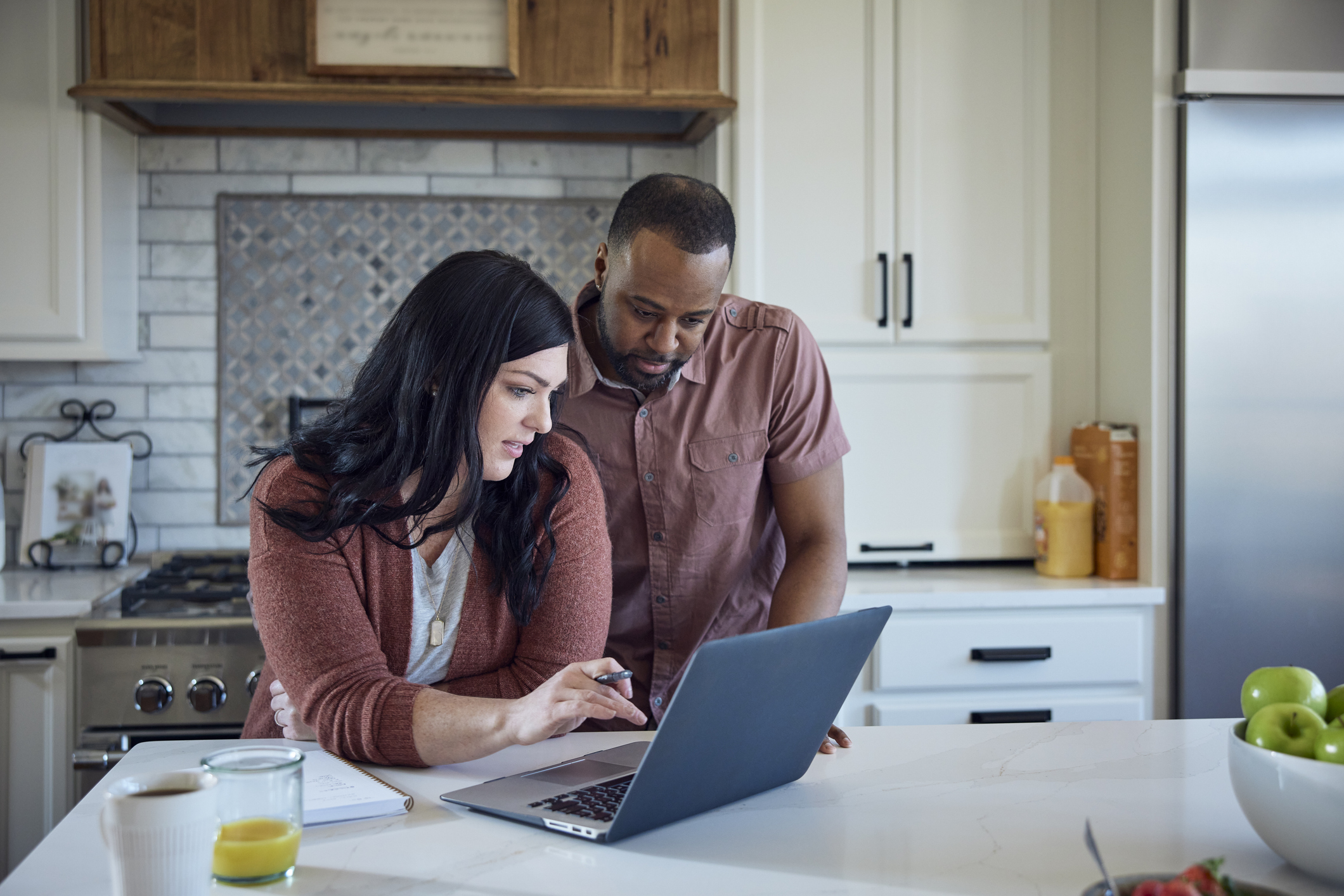How to Lower Home Insurance Rates When Climate Change Increases Costs
A top insurer warns the damage climate change creates make it cost-prohibitive for insurers to cover some areas. Learn how to protect your home and lower costs.

The weather is causing so much damage, home insurance companies are struggling to keep up. For example, wildfires in California caused more than $250 billion in damages.
It's created a situation in which some insurance companies such as State Farm had to drop coverage in more risk-prone areas of Los Angeles.
According to insurance expert Günther Thallinger, a board member with Allianz SE, this is a preview of coming attractions. "We are fast approaching temperature levels — 1.5C, 2C, 3C — where insurers will no longer be able to offer coverage for many of these risks,” he told The Guardian.
From just $107.88 $24.99 for Kiplinger Personal Finance
Become a smarter, better informed investor. Subscribe from just $107.88 $24.99, plus get up to 4 Special Issues

Sign up for Kiplinger’s Free Newsletters
Profit and prosper with the best of expert advice on investing, taxes, retirement, personal finance and more - straight to your e-mail.
Profit and prosper with the best of expert advice - straight to your e-mail.
This would have an effect on other financial sectors, as well. "This applies not only to housing, but to infrastructure, transportation, agriculture and industry,” he remarked.
The good news is solutions are available that can slow climate change's speed, such as zero-emission options. The bad news is that some countries are slow to adopt such solutions, while in other nations, such considerations aren't on the table.
How the U.S. fails to address climate change threats
Since taking office, President Donald Trump has worked to undo many efforts that his predecessors set up to combat climate change while calling it "a hoax." He withdrew the U.S. from the Paris Agreement, an international treaty in which countries pledge to work together to limit climate warming to less than 2 degrees Celsius.
In addition, members of his cabinet are dismantling other agencies that aid in assisting those impacted by climate change.
Homeland Security Secretary Kristi Noem said she supports the dismantling or severe reduction of the Federal Emergency Management Agency (FEMA). While a dismantling hasn't happened yet, the new administration changed the way it works.
Recently, FEMA announced the discontinuation of the Building Resilient Infrastructure and Communities program, which was responsible for helping communities prepare for climate change events such as flooding and wildfires. The program ended due to efforts to remove "fraud, waste and abuse."
If you feel as if you're on your own with all of this, you would be accurate. However, there are some things you can do to lower costs and protect your home.

How to save when home insurance rates rise
The average cost of home insurance on a $300,000 dwelling is $2,267 annually, according to Bankrate.
That said, your costs can vary based on a variety of factors. The age of your home, its size, claims history, weather in your area and other variables will create a more accurate depiction of what you'll pay for home insurance.
The easiest and most effective way to save when home insurance prices surge is to request a fresh quote on your property.
Using this tool from Bankrate can show you an idea of what it takes to insure your property:
Last year, I received a policy renewal that was going to add a hundred dollars per month to my home insurance premium. I didn't file any claims, but others in the area did due to hail damage.
Conducting a quick quote search allowed me to save not only on my home insurance but my auto, too. It pays to shop around for home insurance.
Improvements to make your home more climate-resistant
Doing some of the following improvements can help your home better withstand the rigors of inclement weather, and they might save money on your homeowners insurance:
- Install a metal roof: If you have an older roof, you're probably paying a little more for home insurance. By replacing it with a metal roof, you shelter your home from hail and winter weather, and you might earn a discount.
- Add storm shutters: Storm shutters can protect your windows from hail damage, and in some instances, it could earn you a small discount.
- Install a security system: Security systems can lower your home insurance because it can prevent crimes of opportunity. Some home security systems also come with excellent detection tools such as fire and water sensors, which can alert you to problems quicker.
Let the light in while still protecting your windows and doors. 16 mm clear polycarbonate 3 wall construction. Easy to install and remove for storage after the storm has passed.
Make sure to notify your insurance carrier of any home improvements you do so they can reflect this in your premiums.
In the case of metal roofs, it might not lower your insurance costs, but it will lower the costs incurred by storm damage. Metal roofs also last 40 to 70 years on average, meaning your replacement costs would be minimal for the life of ownership.
The bottom line
The damage wrought by climate change creates a situation in which some locations are too risky for insurance companies, and in other areas, it's raising rates for many homeowners.
One of the best ways to lower rates is to shop around before your policy renews, which can save hundreds of dollars annually.
By making some improvements to your home, you can also help it become more climate-resistant while lowering insurance costs.
Related section
Profit and prosper with the best of Kiplinger's advice on investing, taxes, retirement, personal finance and much more. Delivered daily. Enter your email in the box and click Sign Me Up.

Sean is a veteran personal finance writer, with over 10 years of experience. He's written finance guides on insurance, savings, travel and more for CNET, Bankrate and GOBankingRates.
-
 How to Avoid the Financial Quicksand of Early Retirement Losses
How to Avoid the Financial Quicksand of Early Retirement LossesSequence of returns — experiencing losses early on — can quickly deplete your savings, highlighting the need for strategies that prioritize income stability.
-
 How an Elder Law Attorney Can Help Protect Your Aging Parents
How an Elder Law Attorney Can Help Protect Your Aging ParentsIf you are worried about older family members or friends whose financial judgment is raising red flags, help is out there — from an elder law attorney.
-
 Q4 Post-Mortem From an Investment Adviser: Year of Resilience
Q4 Post-Mortem From an Investment Adviser: Year of ResilienceFinancial pro Prem Patel shares his take on how markets performed in the fourth quarter of 2025, with an eye toward what investors should keep in mind for 2026.
-
 Is Your Emergency Fund Running Low? Here's How to Bulk It Back Up
Is Your Emergency Fund Running Low? Here's How to Bulk It Back UpIf you're struggling right now, you're not alone. Here's how you can identify financial issues, implement a budget and prioritize rebuilding your emergency fund.
-
 My First $1 Million: Semiretired CPA, 68, San Francisco
My First $1 Million: Semiretired CPA, 68, San FranciscoEver wonder how someone who's made a million dollars or more did it? Kiplinger's My First $1 Million series uncovers the answers.
-
 I'm a Wealth Adviser: These Are the 7 Risks Your Retirement Plan Should Address
I'm a Wealth Adviser: These Are the 7 Risks Your Retirement Plan Should AddressYour retirement needs to be able to withstand several major threats, including inflation, longevity, long-term care costs, market swings and more.
-
 Tip: Ways to Track Your Credit Card Rewards
Tip: Ways to Track Your Credit Card RewardsHere are the best strategies and apps to help you stay current with your credit card rewards.
-
 Do You Have an Insurance Coverage Gap for Your Valuables? You May Be Surprised to Learn You Do
Do You Have an Insurance Coverage Gap for Your Valuables? You May Be Surprised to Learn You DoStandard homeowners insurance usually has strict limits on high-value items, so you should formally "schedule" these valuable possessions with your insurer.
-
 How We Manage Our Finances Together as a Married Couple
How We Manage Our Finances Together as a Married CoupleDouglas Boneparth, a certified financial planner, and his wife, Heather Boneparth, speak with Kiplinger about couples managing finances.
-
 How AI Is Changing the Way Americans Spend on Live Events
How AI Is Changing the Way Americans Spend on Live EventsAI bots are reshaping ticket prices, resale markets and how fans shop. Here's what it means for your wallet and how to get the best deals on concerts, sports and shows.
-
 What Bilt Cardholders Need to Know as Wells Fargo Exits the Program
What Bilt Cardholders Need to Know as Wells Fargo Exits the ProgramA major shake-up in the Bilt Rewards program could affect your credit card, rent rewards and points strategy heading into 2026.
